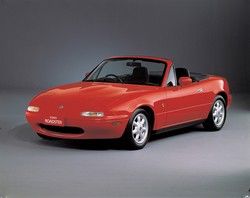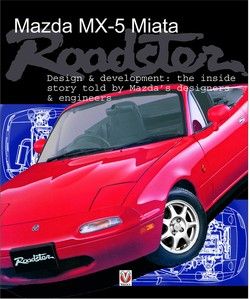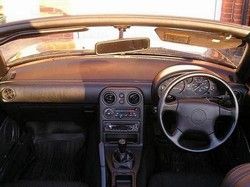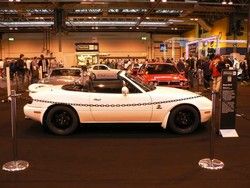PH Heroes: Mazda MX-5
Dreamt up in California, it was a Japanese interpretation of a classic British sports car. Simon Green looks at the Mazda MX-5...
Mention the Mazda MX-5 to someone and you might see a smirk creep across their face. It’s a bit girly isn’t it? Handy for driving between hairdressing appointments. Nippy for going to meet Clarissa at the tennis club for a coffee. Finished yet? The truth is, and we all know it really, that the little Mazda has the right ingredients to make it an automotive legend.
There are no jokes about the way this car drives. Rear-wheel drive/ front engine, near 50-50 weight distribution, 16-valve engine, light and good handling. It is difficult to imagine that the origins of this car, now in its third incarnation, date back to 1981, and some people believe it may be earlier than that. Mazda had wanted to capture a bygone era of wind-in-the-hair British sports cars like the Lotus Elan, MGBs and Triumphs, so commissioned ideas from its design teams in California and Japan. The Japanese team proposed a front-engined, front-wheel drive car, but thankfully the US team won with their front-engined, rear-drive proposal.
Mazda happily used the Elan as its inspiration for the car, and made no secret of the fact that it had copied much of the British car’s design. Everything from the overall Lotus-esque design of the body, to the engine valve cover that looks like a Lotus twin cam, makes this car feel special. Even the exhaust note was meant to sound like an MGB (well a bit). Mazda had designed a well-sorted, cheap and pretty roadster that would appeal as much to yummy mummies who cared about their image, to serious drivers who cared about weight distribution and on-the-limit handling. This is probably why the MX-5 has become the best selling sports car of all time.
But what is the first generation like to drive today? Well for a start the MX-5 is covered in little details that give it character. It feels special from the moment you open the door with the little silver latch. Then you slide down into the car, not sit on top of it like so many other cars. The steering wheel is straight in front of you and if you take the rubber centre cap off you will see the MOMO badge.
The pedals are just a little off to the right. Somehow the sea of black plastic looks OK and your eyes tend to focus on the two main dials in the pod. To your left is the centre console where you can control the surprisingly good heating. Unlike so many other Japanese cars of that time it is a joy to sit in because of the simple layout. Change gear on the MX-5 and you notice the feel of the chunky gear knob. The gearchange is very good, in part due to the heavy knob (no jokes), and each gear slots in nicely. Feedback through the power assisted steering is not up to Elise standards, but it’s not far off. Turn-in is very good and grip even up to the edge is fantastic. B-roads were put there for MX-5 drivers to enjoy their cars.
The original MX-5, known as the NA, came with a 1.6-litre, double overhead cam, inline four-cyliner engine and although it only had around 110bhp to think that this car was only about straight-line speed was to miss the point. The car handles so beautifully and is so easy to control on the limit it meant you didn’t have to be a racing driver to feel like one. Being so popular, parts are cheap and the cars take high mileages in their stride. You can pick up rough examples for as little as £1,000 these days – a perfect track day proposition.
If the 1.6 litre really isn’t powerful enough you can either go for a later, more powerful version or even explore the possibilities of fitting a turbo. Insurance is not excessive and all round they are cheap to own.
Hold on to it and you will have a future classic, although they arguably have already achieved classic status. In a way it’s good that all those hairdressers bought them, that means there’s plenty around for us to buy now.Gassing Station | General Gassing | Top of Page | What's New | My Stuff








